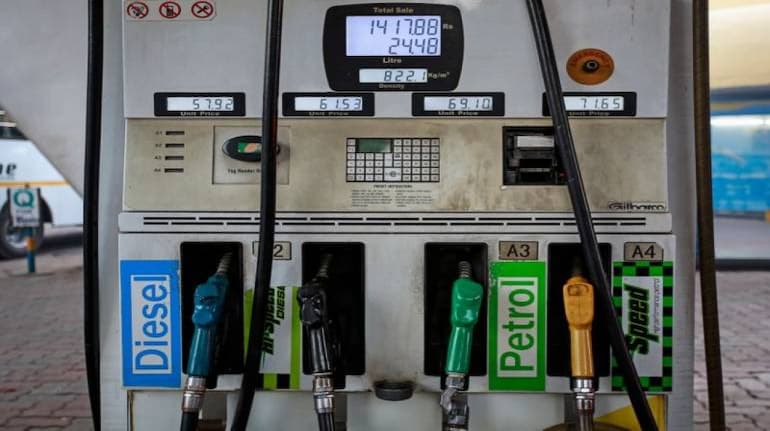



Petrol and diesel prices were unchanged on March 5, remaining stagnant for over 120 days, a notification issued by state-owned fuel retailers showed. Prices have been frozen in the past but the current pause is the longest since daily fuel price revision was adopted in June 2017.
Domestically, the last rate cut was by Delhi when it reduced the local sales tax, or the value-added tax (VAT), on petrol from 30 to 19.4 percent from December 1 midnight, bringing down the price by around Rs 8 to Rs 95.41 a litre. Diesel price remains unchanged in the national capital at Rs 86.67 a litre.
On November 3, the Centre had gone for the deepest excise duty cut ever to cool retail prices from record highs, reducing the duty on petrol by Rs 5 and on diesel by Rs 10. Many states and Union Territories followed the Centre's lead to give further relief to consumers.
In Mumbai, a November 4 cut reduced the price of petrol to Rs 109.98 a litre, which remains unchanged. Diesel is at Rs 94.14 a litre. While in Kolkata, petrol and diesel prices remain at Rs 104.67 and Rs 89.79. Petrol is at Rs 101.40 and diesel at Rs 91.43 in Chennai.
In Gurugram petrol is Rs 95.48 and diesel Rs 86.70 per litre; Noida petrol Rs 95.73 and diesel Rs 85.21 per litre; Jaipur petrol Rs 107.21 and diesel Rs 90.83 per litre; Lucknow petrol Rs 95.14 and diesel Rs 86.68 per litre; Patna petrol Rs 105.90 and diesel Rs 91.73 per litre.
States and UTs that cut VAT after the Centre reduced excise duty include Ladakh, Jammu and Kashmir, Himachal Pradesh, Delhi, Sikkim, Mizoram, Daman and Diu, Karnataka and Puducherry. Punjab, saw the biggest drop in petrol prices after it slashed VAT the most. The UT of Ladakh has seen the biggest drop in diesel rates.
States that did not lower VAT include Maharashtra, Jharkhand, Tamil Nadu, West Bengal, Kerala, Telangana and Andhra Pradesh.
Price hikes likely next week?
Earlier on March 2, it was reported that petrol and diesel price hikes are likely to resume from next week after completion of the state assembly elections. The seventh and final phase of polling for the Uttar Pradesh legislative assembly is on March 7 and the counting of votes slated for March 10.
The hikes will look to bridge the Rs 9/litre gap created by international oil prices soaring past $100 a barrel. State-owned fuel retailers Indian Oil Corporation (IOC), Bharat Petroleum Corporation (BPCL) and Hindustan Petroleum Corporation (HPCL) are making a loss of Rs 5.7 a litre on petrol and diesel. This is without taking into account their normal margin of Rs 2.5 per litre.
International crude oil prices shot above $110 a barrel for the first time since mid-2014 on fears that oil and gas supplies from energy giant Russia could be disrupted, either by the conflict in Ukraine or retaliatory western sanctions.
JP Morgan in a report said for oil marketing companies (OMCs) need to increase retail prices by Rs 9 a litre or 10 percent next week to revert to normalised marketing margins. It added that prices will need to be increased by Rs 12 per litre by March 16 for fuel retailers to break even.
March 5 closing prices
Benchmark United States crude oil for April delivery rose $8.01 to $115.68 a barrel on Friday. Brent crude for May delivery rose $7.65 to $118.11 a barrel.
Wholesale gasoline for April delivery rose 26 cents to $3.54 a gallon. April heating oil rose 28 cents to $3.78 a gallon. April natural gas rose 30 cents to $5.02 per 1,000 cubic feet.
(With inputs from PTI and AP)
Discover the latest Business News, Sensex, and Nifty updates. Obtain Personal Finance insights, tax queries, and expert opinions on Moneycontrol or download the Moneycontrol App to stay updated!
Find the best of Al News in one place, specially curated for you every weekend.
Stay on top of the latest tech trends and biggest startup news.